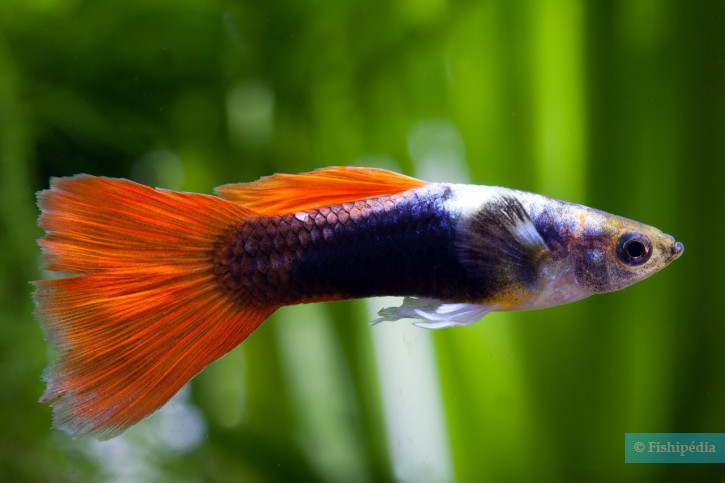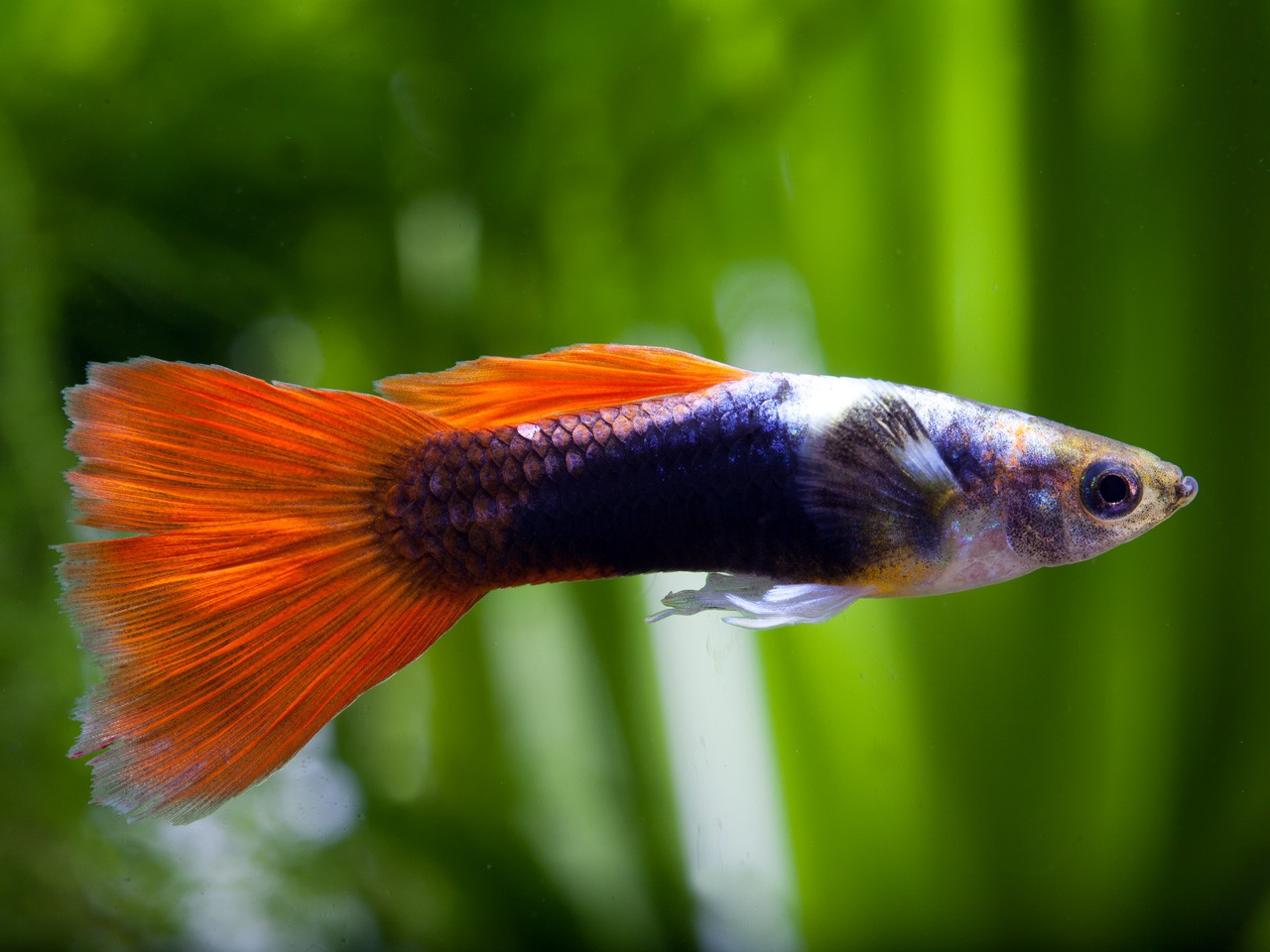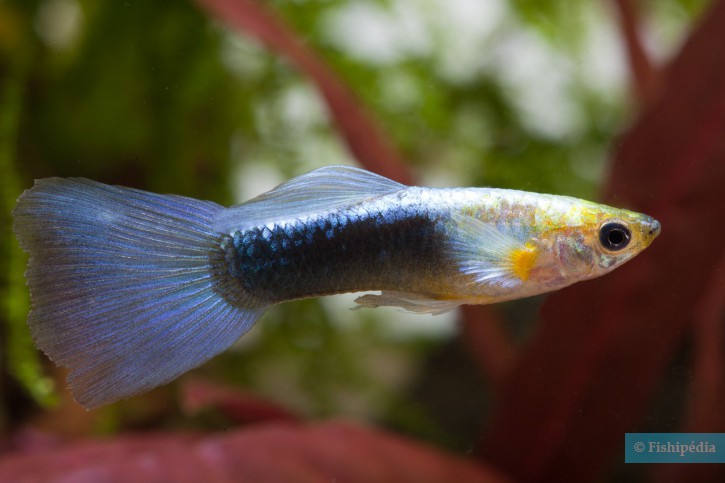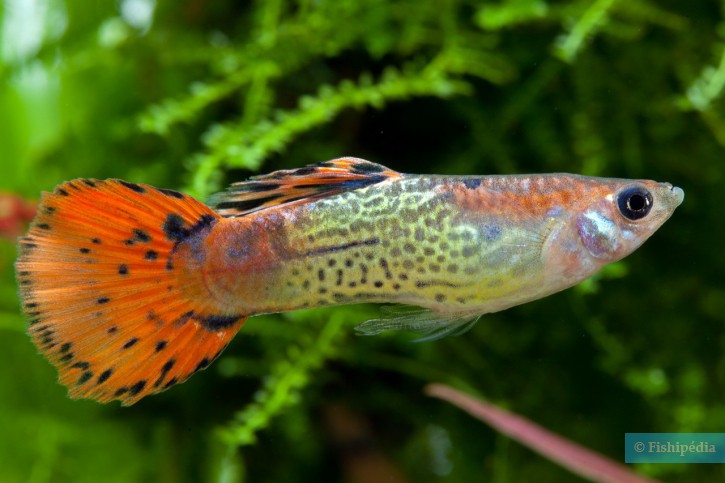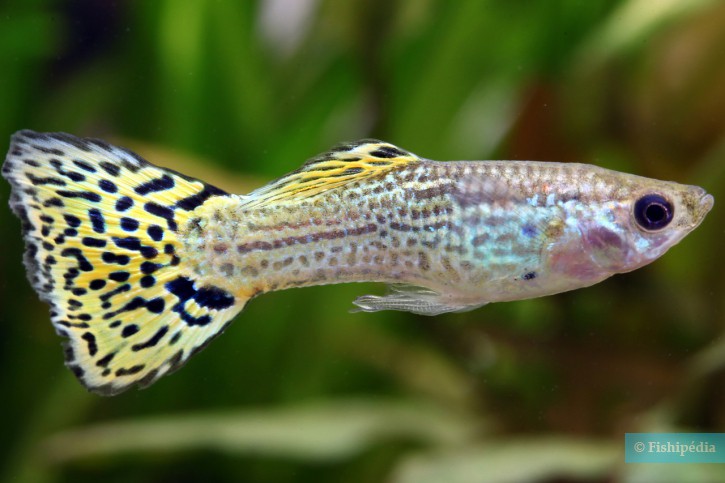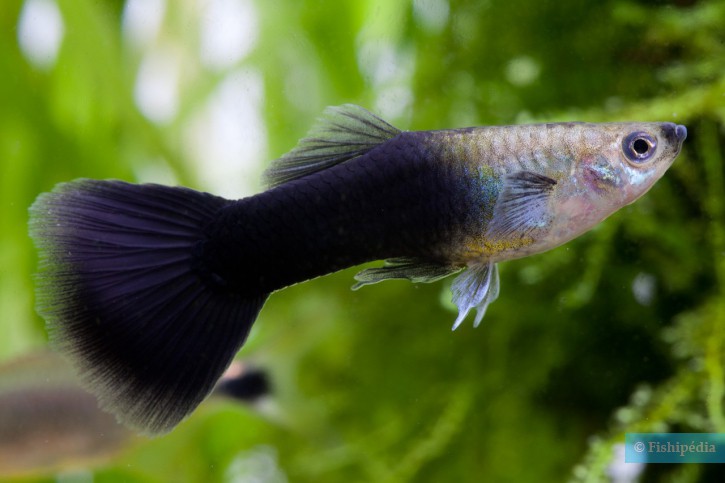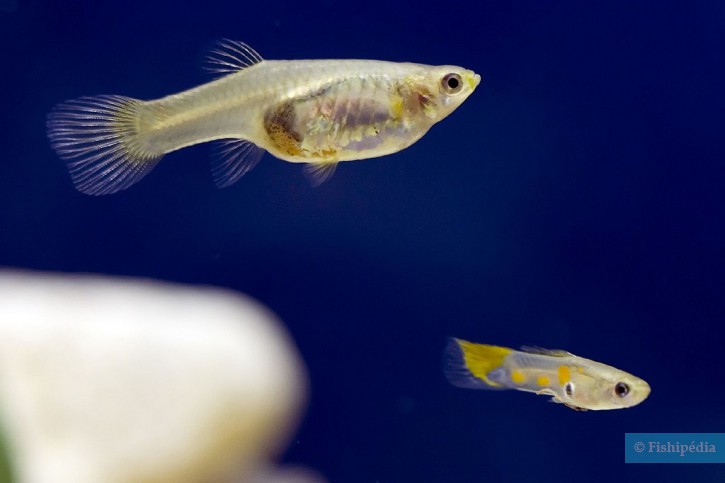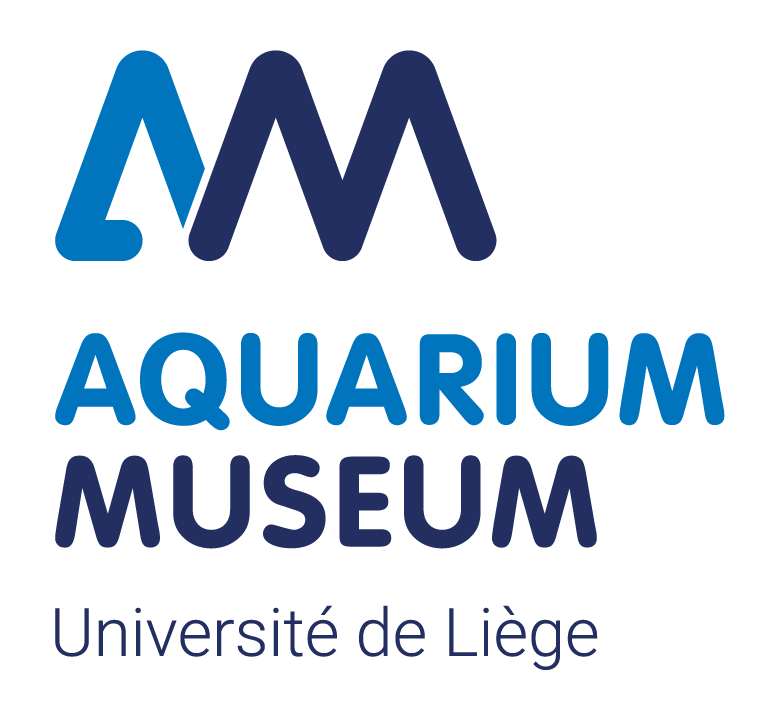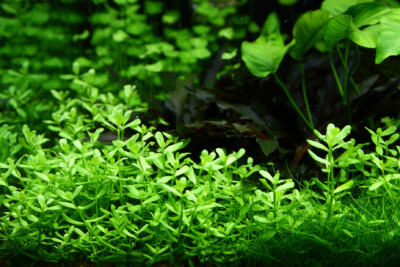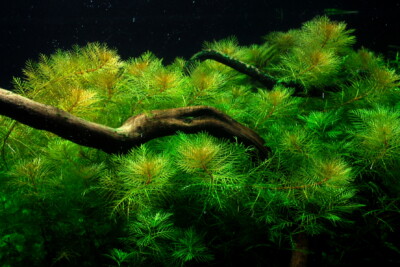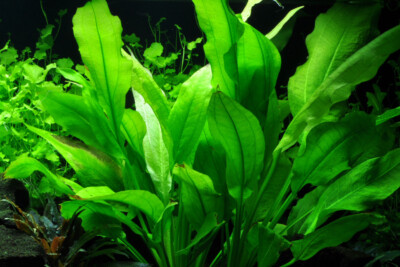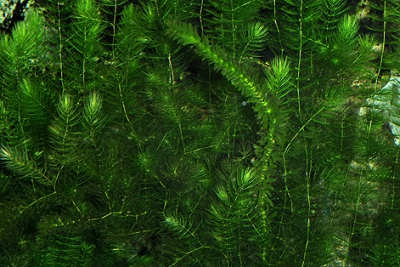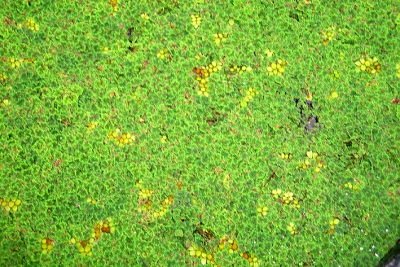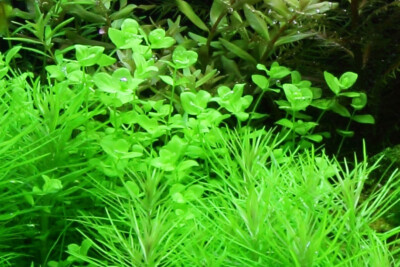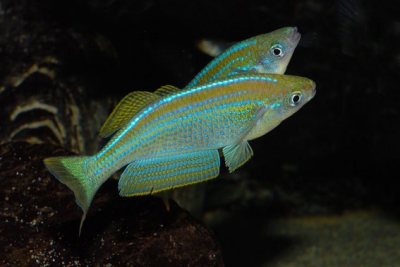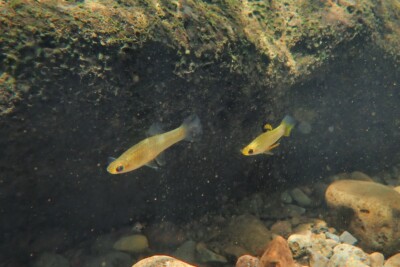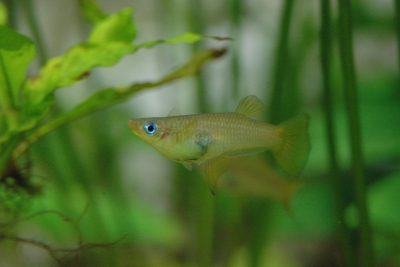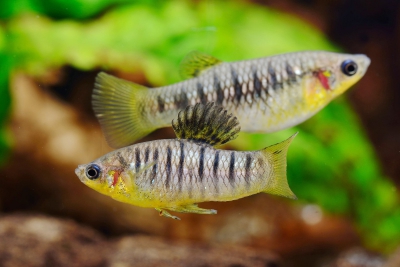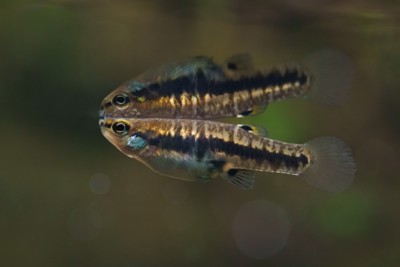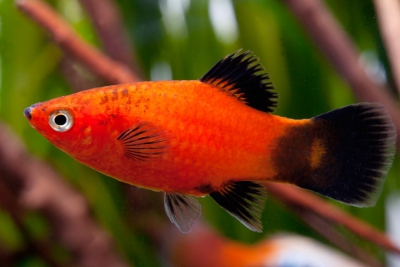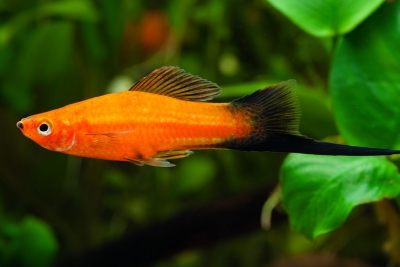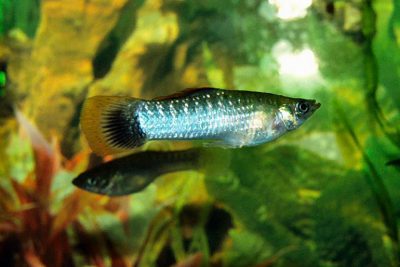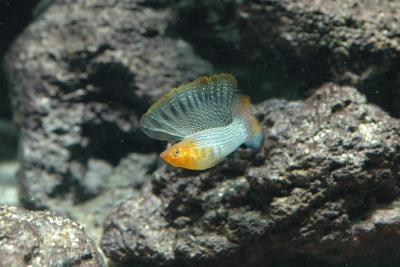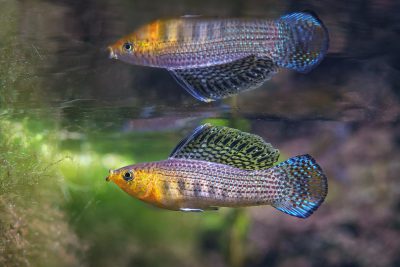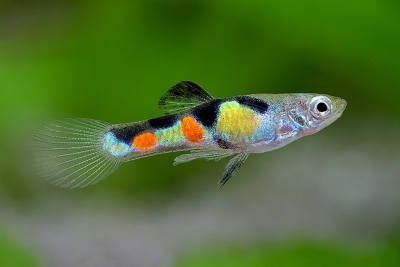Introduction
The guppy is one of the most well-known and widespread fish in the aquarium hobby, especially among beginners.
Due to their popularity, the breeding of these fish has become intensive. Repeated crossbreeding has made them more susceptible to diseases. Although widely distributed (and sometimes even invasive) in the wild, the wild form is rare in the trade.
Who is it?
Morphology
-
Type
-
Average size3 cm
-
Maximum size5 cm
-
Longevity3 year
-
Type
-
Average size3 cm
-
Maximum size5 cm
-
Longevity3 year
How to recognize This fish ?
Like all Poeciliids, the guppy has its pectoral fins placed quite high on the sides of the body. Its pelvic fins are also positioned forward.
It is a small-sized fish, with the largest females not exceeding 5 centimeters. It has a flattened back, and its mouth is positioned very high on its body.
Sexual dimorphism
The male has a visible reproductive organ called gonopod which allows him to fertilize the female.
The male is more colorful than the female. Additionally, it has a gonopodium (copulatory organ) instead of the rear anal fin.
Its fins are much more developed than those of the female. Successive selections have gradually led to the creation of atypical varieties. The tails of males can have round, sword (low or high), or veiled shapes. The most common are fan-shaped and triangular tails.
The female is larger than the male (about 4 cm for females and 3 cm for males) and less colorful. She also has a dark spot on her belly.
Behaviour & Life cycle
-
dietomnivorous with carnivorous tendency
-
Sociabilityliving in small groups
-
territorialNo
-
Way of livingdiurnal
The guppy is a lively fish that is found in groups of varying sizes. It naturally resides near the surface where it captures its food.
Males can be particularly aggressive towards females. It is a very prolific species that tends to become invasive.
Reproduction
-
Reproductionovovivipare
Guppies are ovoviviparous fish: the fry are incubated in the female's belly. When they are released, they are already in the stage of free swimming and are ready to feed on their own.
Harmless species
Cette espèce ne présente pas de danger particulier pour l'Homme en cas de rencontre dans son milieu naturel.
Origin and distribution
Geographic distribution & Conservation
-
Invasive speciesYes
The guppy is native to the American continent. Since 1940, it has been widely introduced worldwide to combat mosquitoes. It is now established on many tropical islands such as Martinique or New Caledonia.
References indicate that the species has developed specific color patterns in the islands where it has been introduced.
Conservation status of populations (IUCN)
What is its habitat?
Natural environment characteristics
-
Temperature18 - 28 °C
-
pH (acidity)5.5 - 8
-
gh (hardness)6 - 15
-
FlowSlow and Stagnant
Biotope presentation
In areas where it is present, the guppy has adapted widely. It is found in slow-flowing waters, typically near the banks. It inhabits coastal creeks, streams, and marshy areas where it readily feeds on small insects and mosquito larvae.
It thrives in shallow waters, not far from the surface, in areas with abundant vegetation (aquatic and marsh plants, decomposing organic matter, branches, etc.).
Main recommendations for fishkeeping
Deontology
In order to preserve wildlife, if you acquire this animal, it must not be released into the wild. See also, the Fishipedia charter.
Fishipedia supports the practice of responsible and environmentally friendly aquarium keeping. We encourage maintenance if it is motivated by a desire to understand the biological functioning of living things and if it is done with respect for animal life.
We believe that aquaristics is an opening to the discovery of aquatic environments, especially freshwater, and that this knowledge is necessary to better protect and respect these environments. Logically, we refute the compulsive purchase of animals that would not find a sufficient and / or adapted place in the host aquarium.
Our recommendations
-
Min volume60 liters
-
Population min4
-
Temperature18 - 28 °C
-
pH (acidity)6.8 - 7.2
Characteristics
-
Difficulty breedingvery easy
-
Robustnesstolerant
-
Behaviourpeaceful
-
Availabilityusual
Recommended equipment from our partners
-
Aquarium
-
Filtration
General reminders
It is strongly advised to read the complete dedicated file and to get information on the feedbacks of maintenance of the envisaged animal, this to avoid any potential conflict whose end result is generally the death of the individual (or the other inhabitants). It is important not to overload your aquarium to limit pollution. This will make maintenance easier.
In nature, animals are subject to weather conditions and live in waters with variable characteristics. The recommendations offered by our team for aquarium maintenance are a guidance and cannot be assimilated to scientific datas.
General reminder on maintenance datas
Le démarrage d'un aquarium est une partie primordiale pour l'équilibre et le bien-être des poissons. Lorsque l'on met en eau un aquarium, l'eau passe naturellement par un cycle biologique : le cycle de l'azote. Celui-ci dure environ trois semaines. Tous les 2 jours, nous vous conseillons de tester votre eau jusqu'à ce que le taux de nitrite soit à zéro pendant plusieurs jours d'affilée.
Pour accélérer ce cycle, vous pouvez utiliser un activateur de bactéries comme JBL Denitrol. Cette solution riche en bactéries vivantes et enzymes permet une mise en place rapide du cycle de l'azote. Les poissons peuvent alors être introduits plus rapidement.
Il est important de tester l'eau de son aquarium régulièrement pour maintenir un environnement sain pour les poissons et les autres habitants. Les tests d'eau permettent de mesurer les niveaux de différents paramètres tels que le pH, la dureté totale, ainsi que les taux de nitrates, de nitrites et d'ammoniaque.
Pour réaliser ces tests, vous pouvez utiliser des produits d'analyse spécialisés tels que JBL ProScan qui permet de réaliser un diagnostic de l'eau directement via un smartphone. Il existe également des coffrets de tests plus classiques de bandelettes, comme JBL PROAQUATEST.
En cas d’usage de l’eau du robinet, vous pouvez utiliser un conditionneur d’eau de type Biotopol de JBL pour éliminer les substances nocives comme le chlore, le cuivre, le plomb et le zinc. Une eau trop dure ou trop calcaire peut être inadaptée à de nombreuses espèces tropicales d’eau douce. Si nécessaire, vous pouvez la couper avec de l’eau osmosée ou de pluie filtrée afin d’obtenir une dureté plus adaptée aux besoins de vos poissons et de vos plantes. Les conditionneurs d'eau garantissent une meilleure santé aux poissons et une meilleure croissance des plantes.
Chlorine and chloramine are dangerous for the health of animals. Used to disinfect water, these agents are present in significant quantities in tap water. We recommend using an anti-chlorine agent every time you change the water. In addition to chlorine, treatments and medicines sold for aquarium use sometimes contain dangerous heavy metals in high doses.
Specific needs for the guppy
The guppy is a species which lives naturally at a temperature between 18 °C and 28 °C. Nitrate levels should remain below 50mg/L. To keep the water clean and unpolluted, plan on changing 20% to 30% of the water volume each month.
The guppy is a species that is very accessible to breed. Its hardiness makes it an ideal animal for a first time aquarist. However, it is recommended that you follow a few basic rules for successful breeding.
This species is particularly common in the aquarium trade. Animals from long-term breeding are usually acclimatized at a temperature of about 26 °C in neutral water.
Cohabitation & Environment
Being a living in small groups fish, it is advisable to install at least 4 individuals in an aquarium of 60 liters minimum (for 40 cm of frontage). Group maintenance is a prerequisite to ensure their well-being. Lonely individuals tend to quickly become stressed and become especially susceptible to disease. Although sometimes certain groups can "merge", mixing several gregarious species living in the same zone of life is not recommended if the volume is not consequent.
The guppy is a peaceful species that generally does not exhibit behavioral problems in a community aquarium.
Males have the particularity to be particularly oppressive with females. This behavior can tire the females to the point that it sometimes leads to their death. It is important to set up a planted aquarium with many refuges.
It should be noticed that this species should not be kept with large crustaceans or fish, as it would become a prey of choice. Smaller species should preferably be inserted in the aquarium some time before the larger ones. Moreover, if you want to breed it, it is better to put them in a specific aquarium.The species enjoys a particularly vegetation-rich environment. The addition of plants will provide many useful hiding places for resting. These areas are also conducive to possible breeding in the aquarium. Floating plants such as Salvinia can be added to recreate the subdued atmosphere characteristic of its living conditions in the wild.
Tips for feeding
The guppy is omnivorous with carnivorous tendency.
This species can eat dry food (flakes, pellets), fresh food and frozen food. To avoid deficiencies, it is recommended to vary the types of food.
Feed animals in moderation to maintain good water quality. Meals should be eaten within 2–3 minutes, served in several small portions rather than a single large ration.
Uneaten food quickly decomposes, releasing ammonia, nitrites, and nitrates, which disturb the aquarium’s biological balance.
Make sure each species can access food properly, slower or bottom-dwelling individuals may require targeted feeding.Food recommendations from our partner JBL - Products PRONOVO
-
Granules
-
Flakes
-
Sticks
Reproduction protocol
-
Maintenance difficultyvery easy
-
egg-laying protectionNo
Hybridization risks
In general, it is advised not to mix several species of the same genus or different varieties of the same species, to avoid the risks of hybridization.
These plants might interest you
Plants play a crucial role in aquariums, both for their ability to filter water by absorbing excess nutrients and for their aesthetic contribution. They provide fish with natural hiding places, can serve as breeding sites, and generally help maintain the overall balance and optimal conditions of the aquarium. The selection presented here includes species from the same regions as the species described on this page, although they do not necessarily come from its exact natural biotope.
To go further
Sources & Contributions
Participation & Validation
The Fishipedia team and specialist contributors are committed to providing high-quality content. However, although the information comes from scientific sources or testimonials from specialists, the cards may contain inaccuracies.

Benoit Chartrer
Translation
Translation done with the valuable contribution of our translators, who make this information available to a wider audience. We sincerely thank them for their commitment.
Bibliographic references
- - GBIF
- - A New Species of Poeciliid Fish of the Genus Poeciliafrom Hispaniola, with Reinstatement and Redescription of P. dominicensis(Evermann and Clark) - Luis R. Rivas - Northeast Gulf Science Vol. 2 - 1978.
- - LIFE HISTORY EVOLUTION IN GUPPIES (POECILIA RETICULATA): GUPPIES AS A MODEL FOR STUDYING THE EVOLUTIONARY BIOLOGY OF AGING - DAVID N. REZNICK - Elsevier Ltd - 1997.
Scientific partners
Tags
Species of the same family
Same genus
